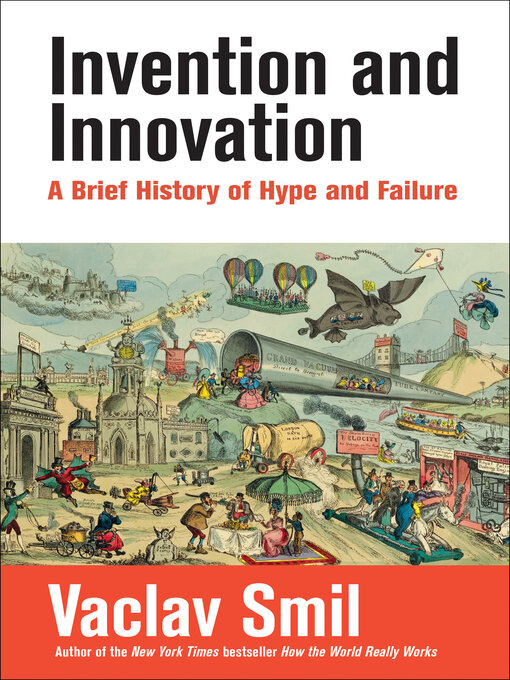- All Fiction
- Dark Tales for Dark Nights
- Tales from the Crypt
- Horror
- Sci-Fi & Fantasy
- Mysteries & Thrillers
- Comics & Graphic Novels
- Stories with Bite!
- Bump in the Night
- Does Whatever a Spider Can
- Cold Cases
- I've Got My Love to Keep Me Warm
- LGTBQIA+ Fiction
- See all fiction collections
A BILL GATES RECOMMENDED BOOK: “Every Smil book that I own is marked up with lots of notes that I take while reading. Invention and Innovation is no exception.”
The world is never finished catching up with Vaclav Smil, author of New York Times bestsellers How the World Really Works and Energy and Civilization. In Invention and Innovation, the prolific author—a favorite of Bill Gates—pens an insightful and fact-filled jaunt through the history of human invention. Impatient with the hype that so often accompanies innovation, Smil offers in this book a clear-eyed corrective to the overpromises that accompany everything from new cures for diseases to AI. He reminds us that even after we go quite far along the invention-development-application trajectory, we may never get anything real to deploy. Or worse, even after we have succeeded by introducing an invention, its future may be marked by underperformance, disappointment, demise, or outright harm.
Drawing on his vast breadth of scientific and historical knowledge, Smil explains the difference between invention and innovation, and looks not only at inventions that failed to dominate as promised (such as the airship, nuclear fission, and supersonic flight), but also at those that turned disastrous (leaded gasoline, DDT, and chlorofluorocarbons). And finally, most importantly, he offers a “wish list” of inventions that we most urgently need to confront the staggering challenges of the twenty-first century.
Filled with engaging examples and pragmatic approaches, this book is a sobering account of the folly that so often attends human ingenuity—and how we can, and must, better align our expectations with reality.
-
Creators
-
Publisher
-
Release date
February 14, 2023 -
Formats
-
Kindle Book
-
OverDrive Read
- ISBN: 9780262374255
-
EPUB ebook
- ISBN: 9780262374255
- File size: 2135 KB
-
-
Languages
- English
-
Reviews

Loading
Formats
- Kindle Book
- OverDrive Read
- EPUB ebook
subjects
Languages
- English
Why is availability limited?
×Availability can change throughout the month based on the library's budget. You can still place a hold on the title, and your hold will be automatically filled as soon as the title is available again.
The Kindle Book format for this title is not supported on:
×Read-along ebook
×The OverDrive Read format of this ebook has professional narration that plays while you read in your browser. Learn more here.
